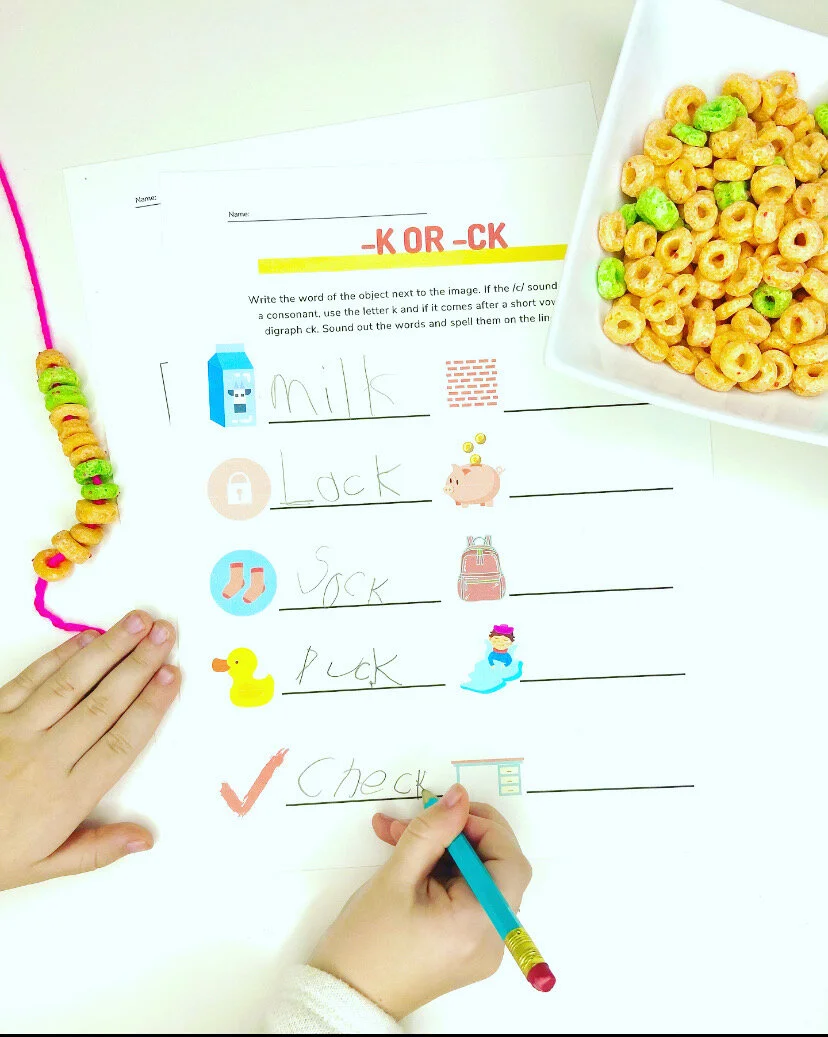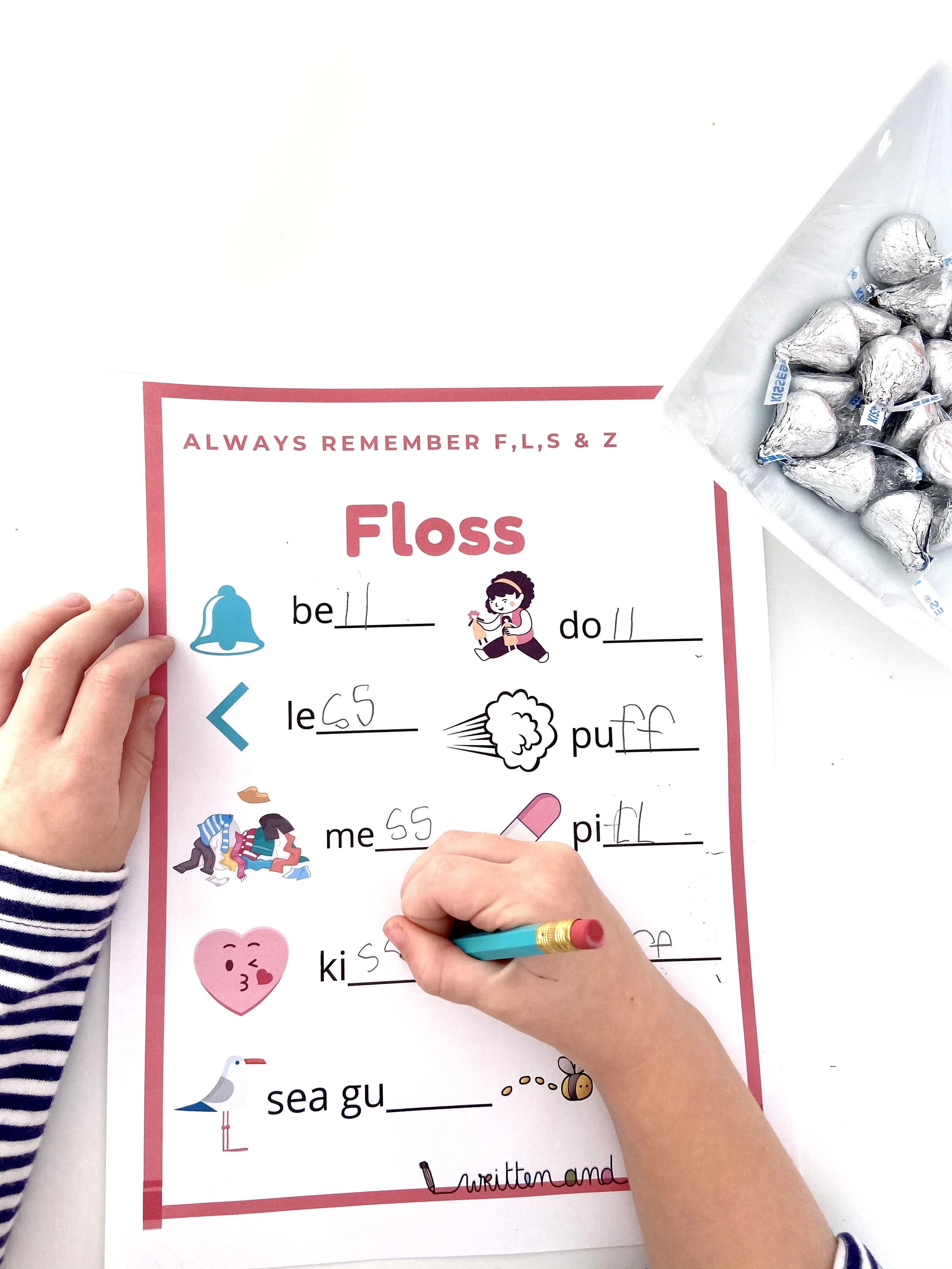15 picture books that teach short vowels
/When children first begin reading, they need to master short vowel sounds. By learning the sounds before moving on to more complex phonics patterns, this will decrease later confusions or struggles, particularly in spelling.
It's probably been a minute since you discussed long and short vowels, so if you need a refresher, short vowel sounds are the ones you hold in one breath. Ahhh or o as in octupus (ahhhh-octupus), a as in apple, e as in elephant, i as in igloo, and u as in umbrella.
Reading these engaging books at nighttime or during a “spelling” time lets kids hear the sounds within context. This activity is more interesting and engaging than copying the sound onto worksheets or only reading decodable books.
If you are able to incorporate one of these books in your nightly read when you know your child is studying a particular vowel at school, you will see their eyes light up. “I know this sound! We just learned it in class!” You might also stop during a walk or a drive to point out the /o/ in the stop sign or /e/ for the eggs you are eating for breakfast.
Short vowel A as in apple
They All Saw A Cat by Brendan Wenzel
This book appeals to all age groups, and beginning readers and spellers will love being able to spell and repeat the word c-a-t. It’s rhythmic so kids can join in and carries a deeper message for children and adults about perspective.
The Stone Sat Still by Brendan Wenzel
Similar to They All Saw A Cat, this simply-worded book shares a more profound theme. Many see the stone, and each sees something different. You will need to point out the /a/ in the word sat, map, maze, haven, stage etc because it’s less repetitive. It’s a nice follow-up book to They All Saw A Cat.
I Want My Hat Back by Jon Klassen
Hilarious for all ages. Bear wants his hat back and goes about politely asking every animal he sees if they have seen it.
Short E for elephant
Egg by Kevin Henkes
This book is perfect for preschool students and beginner readers. It’s repetition is intuitive, and kids can join in and read along or easily retell it. Another classic is An Extrodinary Egg by Leo Lionni.
Nanette’s Baguette by Mo Williems
Nanette’s Baguette is silly but also relatable for all children, as the child allows temptation to get in the way of her task. Share a baguette for dinner while playing around with short /e/ words: fret, met, bet, wet, gazette, florette, forget, and so on.
Henny Penny by Paul Galdone
A classic, Henny Penny, will remind you of your own childhood. You can reread it to your child and simply point out the /e/ sound in Henry, Penny, Lenny, Denny. It might inspire a rhyming game or conversation!
If you are looking for something newer, try Henny, Penny, Lenny, Denny and Mike by Cynthia Rylant.
Short I for igloo
Ish! by Peter H. Reynolds
Ish is not only great for phonics but also for helping children deal with perfectionism and making mistakes. Emily Arrow sings a fun song to go along with it here.
Inch by Inch by Leo Lionni
Clever and beautiful, Inch by Inch tells the story of an inchworm who measures everything. Then a bird demands that he measure his song or else he will be eaten. It’s Mine by Leo Leoni is another classic that repeats the short /i/ sound and is helpful in teaching sharing.
Mrs. Wishy-Washy by Joy Cowley
Another classic! Teachers have used Mrs. Wishy-Washy for decades. The book is so beloved that it’s hard to track down a hardcopy these days. You might consider writing out the story on construction paper and make it into a little book, allowing your child to illustrate each page.
Big Red Lollipop by Rukhsana Khan
Rubina is invited to her first birthday party. She’s beyond excited to attend but her mother will only allow her to go if she takes her little sister along.
Odd Dog by Claudia Boldt
Peanut, the dog, enjoys eating apples instead of dog bones. It might be fun to discuss other things your child finds odd.
Rot, The Cutest in the World! by Ben Claton
Rot is a mutant potato and enters a contest to compete for the position of “cutest in the world!” He discovers the competition is stiff but has confidence. Keep your eye out on the next book, Rot, The Bravest In the World!
Shor U for umbrella
Grumpy Monkey by Suzanne Lang
This is fun for both parents and children. It’s also a good title to include for emotional intelligence. It teaches that it’s ok to be grumpy sometimes, we all have moods. You can point out the /u/ sound like up, umbrella, grump. It also includes the short /i/ sound as Jim is the Chimp.
Stuck! by Oliver Jeffers
Stuck is delightful. You can point out the short u sound like umbrella, up, under, underwear. If your child is a little more progressed (or you are reading to different ages), you can also point out the -ck diagrah. The -ck diagraph only comes at the end of a word, right after a short vowel. Oh, look, short u means ck is the /c/ sound. This book is also fun for sequencing.
Duck! Rabbit! by Amy Krouse Rosenthal
This book is so imaginative, creative and funny! You can’t go wrong with an Amy Krouse Rosenthall book. And again, you can focus on the /u/ sounds or add the -ck spelling rule. It’s also one that young children will likely memorize and want to “read” independently.























































